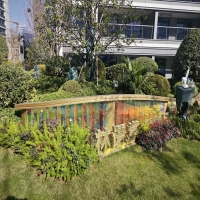Welcome to the website for landscape facilities products and knowledge.
How does the Landscape Round Table address the challenges of maintaining cleanliness in high-touch environments?
In an era where public health consciousness has reached unprecedented levels, the Landscape Round Table has emerged as a pivotal force in redefining cleanliness standards for high-contact environments. This collaborative consortium of hygiene experts, facility managers, and public health officials addresses the unique challenges presented by frequently touched surfaces through a multi-faceted approach that combines scientific rigor with practical implementation.
The fundamental challenge in high-touch environments lies in the constant cycle of contamination that occurs on surfaces like door handles, elevator buttons, handrails, and shared equipment. Traditional cleaning methods often prove insufficient as they typically address cleanliness at scheduled intervals rather than in response to actual usage patterns. The Landscape Round Table confronts this limitation through dynamic cleaning protocols that prioritize surfaces based on real-time usage data and contamination risk assessments.
One revolutionary strategy involves the implementation of smart monitoring systems that track surface utilization patterns throughout facilities. These IoT-enabled devices collect anonymous data on frequency of contact, allowing cleaning teams to optimize their efforts toward the most critical areas. This data-driven approach not only enhances efficiency but also ensures resources are allocated where they deliver maximum protective value.
Material science represents another frontier in the Round Table's comprehensive strategy. The consortium actively researches and promotes antimicrobial surfaces that inherently resist pathogen colonization. From copper-alloy coatings on frequently handled objects to self-sanitizing polymers integrated into furniture design, these advanced materials provide continuous protection between scheduled cleanings. The Round Table establishes material standards and certification processes to help facility managers select truly effective solutions rather than relying on marketing claims.
The human element remains crucial despite technological advancements. The Landscape Round Table develops comprehensive training programs that transform cleaning staff into infection prevention specialists. These educational initiatives cover proper technique, product selection, and the science behind contamination pathways. By professionalizing the role of environmental service workers, the Round Table elevates both performance standards and job satisfaction within this critical workforce.
Collaboration stands as the cornerstone of the Round Table's methodology. Through quarterly symposiums and working groups, members share best practices, research findings, and operational challenges. This knowledge exchange accelerates innovation and prevents redundant efforts across different sectors facing similar hygiene challenges. The resulting guidelines have been adopted by transportation hubs, healthcare facilities, educational institutions, and corporate campuses worldwide.
Measurement and verification complete the Round Table's systematic approach. The consortium has pioneered standardized assessment methods using ATP monitoring, viral surrogate testing, and visual audit tools. These metrics create accountability and enable continuous improvement of cleaning protocols. Facilities implementing Round Table recommendations typically demonstrate a 60-80% reduction in surface contamination levels within the first implementation quarter.
Looking forward, the Landscape Round Table continues to explore emerging technologies from autonomous UV-C disinfection robots to touchless interfaces that fundamentally redesign human interactions with built environments. Their ongoing research into no-touch sanitation systems promises to further reduce dependency on chemical disinfectants while maintaining rigorous hygiene standards.
The Landscape Round Table's holistic strategy demonstrates that effective cleanliness in high-touch environments requires more than frequent wiping—it demands intelligent prioritization, advanced materials, proper training, collaborative knowledge sharing, and rigorous verification. Through this comprehensive framework, the consortium continues to set new benchmarks for environmental hygiene that protect public health while remaining practical for daily implementation across diverse settings.
Related search:

Recommendation
Metal and acrylic color-changing combined curtain wall for large-scale public landscape facilities